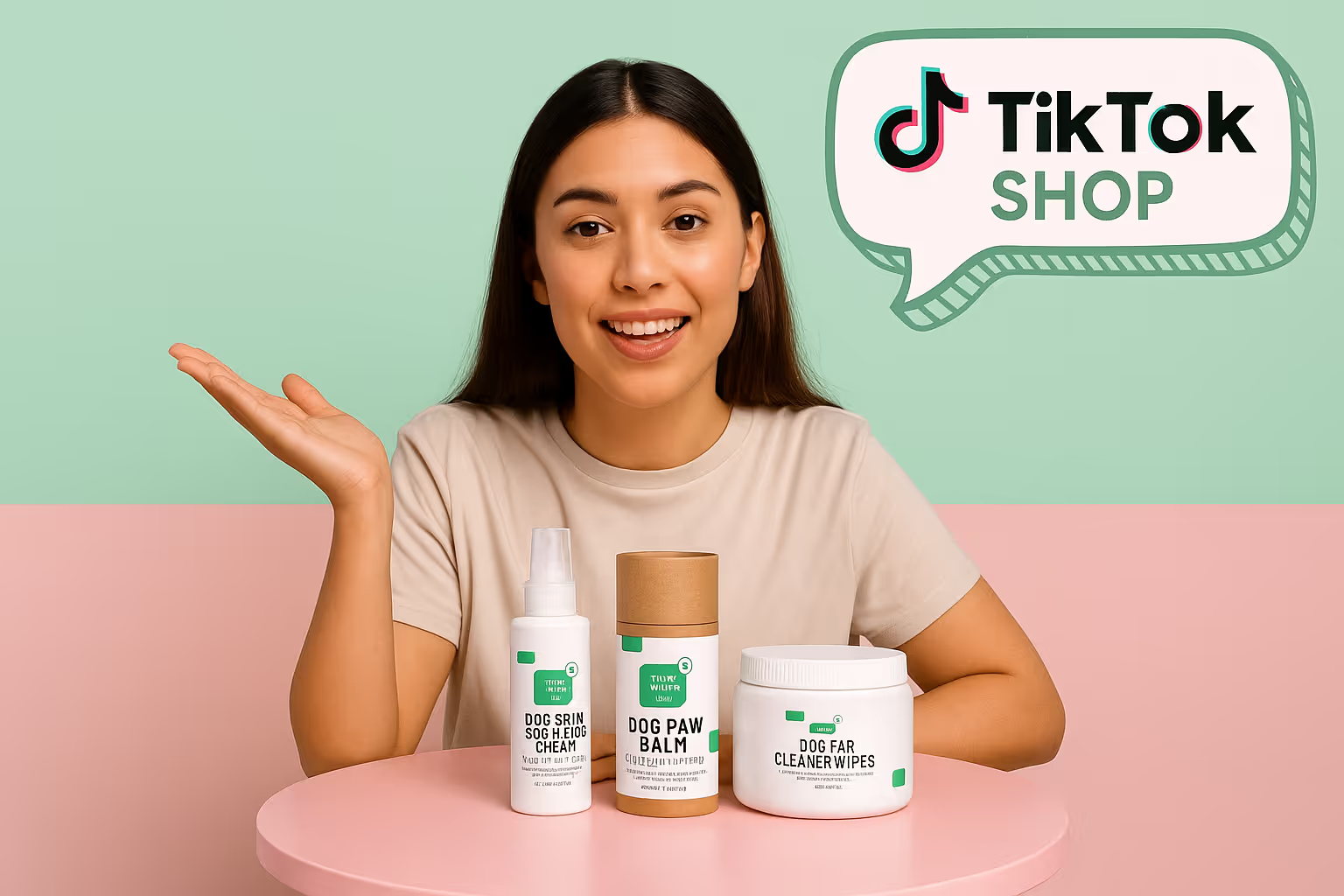How to Use TikTok Analytics to Improve Your Shop's Performance? Complete Process

In the fast-paced world of social commerce, TikTok has evolved into a major e-commerce platform.
Over 61% of users have made a purchase either directly on TikTok or after seeing a product featured, according to a 2023 TikTok Marketing Science study.
For brands aiming to stay competitive, using TikTok analytics to improve your shop's performance is essential.
These analytics offer deep insights into viewer behavior, content engagement, and shopping trends. When used effectively, they can help you optimize your TikTok Shop strategy, boost conversions, and build stronger customer loyalty.
Using TikTok Analytics for Business Growth and Improvement of Your Shop’s Performance
Overwhelmed by numbers? Use this matrix to turn TikTok analytics into real results. Each metric comes with its why, what it means, and what to do next.
TikTok analytics gives shop owners access to key performance indicators that reveal what's working and what isn't.
This data-driven approach removes the guesswork from your TikTok strategy, allowing for precise optimization based on actual user behavior rather than assumptions.
The analytics dashboard provides metrics across three main categories:
- Account-level performance
- Content performance
- Audience insights
When leveraged correctly, these metrics help identify which products resonate with your audience, which content styles drive conversions, and how to optimize your posting schedule for maximum visibility.
Let's explore how to access and interpret these analytics to boost your shop's performance.
Accessing Your TikTok Analytics
Before diving into strategy, you need to know where to find your analytics data:
- Switch to a TikTok Business Account if you haven't already
- Tap the hamburger menu (three lines) in the top right
- Select "Creator Tools" then "Analytics"
- For TikTok Shop sellers, access additional analytics via the TikTok Shop Seller Center

Remember that you'll need to check analytics on TikTok regularly, as the platform only provides data for the last 7-28 days, depending on the metrics you're reviewing.
Key Metrics for Shop Performance
Focus on these critical metrics to improve your shop's performance:
1. Content Metrics:
- Video views
- Completion rate
- Average watch time
- Engagement rate (likes, comments, shares)
- Product click-through rate
2. Shop Metrics:
- Product page views
- Add-to-cart events
- Checkout initiations
- Conversion rate
- Total revenue
3. Audience Metrics:
- Follower growth
- Demographic information
- Active hours
- Geographic distribution
Analyzing Content Performance to Drive Sales
The most successful TikTok Shop owners understand that content is the bridge between viewers and purchases. Analyzing which videos drive the most shop traffic and conversions is essential for refining your content strategy.
Identifying High-Converting Content Types
Start by categorizing your videos and analyzing their performance metrics:
- Product Demonstrations: These show your products in action
- Educational Content: Teaching viewers about product benefits or use cases
- User-Generated Content: Resharing customer reviews or testimonials
- Trending Formats: Videos that leverage current TikTok trends
For each content type, examine:
- Average watch time
- Product click rate
- Conversion rate
This analysis often reveals surprising patterns. For instance, many sellers discover that educational content outperforms direct promotional videos for driving actual sales, despite potentially lower view counts.
Optimizing Video Elements Based on Data
Once you've identified your highest-converting content types, analyze what specific elements make them successful:
- Video Length: TikTok analytics shows average watch time and completion rate. If your 60-second videos have a 30% completion rate while your 15-second videos have an 80% completion rate, consider focusing on shorter content for shop promotions.
- Visual Elements: Track which visual styles (close-ups, lifestyle shots, text overlays) correlate with higher shop visits.
- Call-to-Actions: Test different CTAs and track which drive the most shop traffic. Sometimes a subtle "See more" outperforms a direct "Shop now."
- Sound Elements: Compare performance between videos using trending sounds versus branded audio.
Pro tip: Create a content performance spreadsheet where you track these elements alongside shop metrics. Over time, patterns will emerge that can inform a data-driven content strategy specifically optimized for sales, not just views.
Leveraging Audience Insights for Targeted Marketing
TikTok's audience analytics provide valuable demographic information that can reshape your marketing approach.
Aligning Content with Peak Activity Times
TikTok shows when your followers are most active. Schedule your shop-focused content to publish during these peak periods for maximum visibility.
The data often reveals surprising patterns, for instance, many product categories perform best during late-night hours when users are relaxed and more likely to make impulse purchases.
Geographic and Demographic Targeting
If your analytics reveal that certain regions or age groups engage more with your shop content, consider:
- Creating region-specific promotions
- Adjusting shipping options for high-conversion areas
- Developing product bundles tailored to demographic preferences
Optimizing Product Listings Based on Analytics
Analytics data isn't just useful for content creation; it can transform how you present products in your TikTok Shop.
Identifying High-Performance Products
Review which products receive the most views, clicks, and purchases. These high-performers should receive priority placement in your shop and be featured more prominently in your content.
For businesses with diverse product lines, like those offering private label pet products, analytics can reveal surprising category strengths that may differ from performance on other platforms.

Refining Product Descriptions and Visuals
Analytics can reveal disconnect points in the customer journey. For instance:
- High product page views but low add-to-carts suggest pricing or description issues
- High add-to-carts but low conversions may indicate checkout friction
Use these insights to refine product listings with:
- More compelling benefit statements
- Better images or videos
- Clearer pricing
- Enhanced product specifications
Cross-Platform Synchronization
For businesses selling across multiple platforms, TikTok analytics can inform broader strategy. Consider syncing products from Shopify to TikTok Shop to maintain consistency while applying the data-driven insights from TikTok across your entire e-commerce ecosystem.
Tracking Conversion Metrics and Sales Funnel
The most valuable aspect of TikTok analytics for shop owners is understanding the complete customer journey from view to purchase.
Analyzing the Sales Funnel
Break down your sales funnel into distinct stages and identify where potential customers drop off:
- Awareness: Video views and reach
- Interest: Profile visits and follows
- Consideration: Shop visits and product views
- Intent: Add-to-cart events
- Purchase: Completed transactions
By identifying the stages with the highest drop-off rates, you can implement targeted improvements to optimize the entire funnel.
Tracking ROI of TikTok Shop Efforts
Calculate your return on investment by comparing:
- Content creation costs
- TikTok advertising spend (if applicable)
- Platform fees
- Total revenue generated
This analysis helps determine which products and content types deliver the highest ROI, allowing you to allocate resources more effectively.
Implementing A/B Testing Using Analytics
The true power of analytics comes when you use data to inform experimental content strategies.

Testing Content Variables
Systematically test different variables in your content:
- Video Openings: Compare hook styles (question, statement, shocking fact)
- Product Presentation: Test different angles, lighting, and backgrounds
- Call-to-Action Styles: Compare direct vs. indirect CTAs
- Shop Now Button Placement: Test the timing of when CTAs appear
For each test, create nearly identical videos with just one variable changed, then compare performance metrics to determine which approach drives more shop traffic and conversions.
Optimizing Based on Test Results
After running tests, implement the winning approaches across your content strategy. Continue testing new variables to continuously refine your approach based on real performance data.
Integrating Analytics with Promotional Strategies
TikTok analytics should directly affect how you promote products on TikTok Shop for maximum effectiveness.
Timing Promotions Based on Analytics
Use historical performance data to time your promotions for maximum impact:
- Identify days of the week when conversion rates are highest
- Schedule major product launches during periods of peak engagement
- Plan promotional content series during your audience's most active hours
Measuring Promotional Impact
When running promotions, create specific tracking parameters to measure effectiveness:
- Pre-promotion baseline metrics
- During-promotion performance
- Post-promotion retention rates
This analysis helps determine which promotional strategies deliver sustainable growth versus temporary spikes.
Businesses utilizing fulfillment solutions should pay special attention to inventory planning based on promotional analytics to ensure they can meet demand spikes without delays.
Turning Analytics into Action: Creating a Data-Driven Strategy
The final step is developing a comprehensive, data-driven TikTok Shop strategy.
Building Your Analytics Review Routine
Establish a regular analytics review schedule:
- Daily: Quick check of current video performance
- Weekly: Content performance analysis and adjustments
- Monthly: Full-funnel analysis and strategy refinement
- Quarterly: Comprehensive review and major strategy updates
For each review, document insights and create specific action items based on the data.
Creating a Data-Informed Content Calendar
Use your analytics insights to develop a content calendar that:
- Features high-performing products more frequently
- Incorporates content types with proven conversion success
- Schedules posts during optimal engagement periods
- Balances promotional and value-based content
Lessons from the Field: Segment Audiences with TikTok Pixel Events
Top TikTok Shop sellers use Pixel events, View Content, Add to Cart, and Complete Payment to segment audiences and guide content strategy. For viewers who revisit a product but don’t add to the cart, use testimonials or limited-time offers.
Customers who abandoned their carts respond well to behind-the-scenes clips or free shipping prompts, steadily improving conversion rates and lowering acquisition costs.
This targeted approach turns views into sales by matching content to each stage of the funnel.
Instead of broad messaging, deliver videos based on intent. It boosts engagement, drives repeat purchases, and maximizes ROI, how smart sellers scale TikTok Shops with precision.
Transform Your TikTok Shop With Analytics-Driven Decisions
TikTok analytics is your roadmap to turning a passive shop into a high-performing one. By analyzing user behavior, content engagement, and conversion patterns, you can build a strategy that consistently drives sales.
Top TikTok Shop sellers don’t just post content; they track data, spot patterns, and refine their approach. Start by reviewing your current metrics, identifying improvement areas, and setting up a tracking system.
Over time, your strategy will sharpen, and your performance will grow. The insights are in your dashboard; put them to work.
FAQ
Related blogs

Influencer Pricing Calculator: Find Your Fair Rate for Posts, Reels & Stories
.avif)
How To Market Pet Products Through Storytelling: Win Attention, Build Trust, and Boost Sales Naturally
.avif)
How To Market Coffee To Gen Z: The High-Impact Blueprint Every Brand Needs
.avif)

